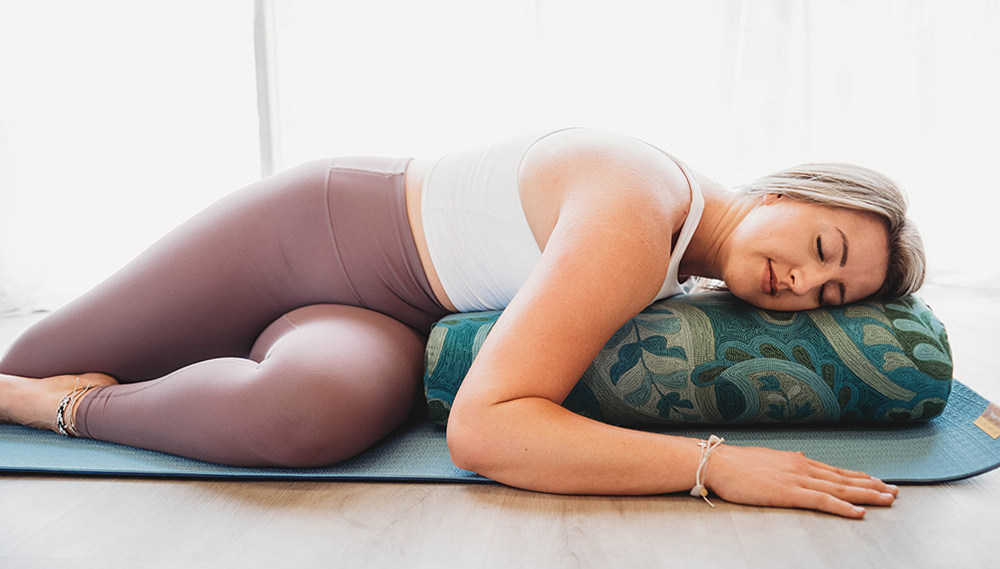
Spinal twists may be the most often requested type of asana in my classes. Not only do they feel good, but they also help keep your core muscles supple and your spine mobile. Pair a spinal twist with a Yoga Bolster and you get a restorative twist. What could be better?
While the lumbar spine is only capable of twisting about two to four degrees, the thoracic spine—the section of the spine connected to the ribcage—loves to twist. The thoracic spine also happens to be an area that tends to become less mobile as we age. So twisting helps that more stable area of the spine maintain its range of motion.
In yoga, we practice spinal twists in standing, sitting and supine positions. While supine twists can certainly be classified as restorative, practicing spinal rotation from a prone position is arguably the most calming for our nervous systems.
The prone twist I describe here comes from Judith Hanson Lasater’s Relax and Renew. I’ve taught this twist for years in my classes. I teach this asana toward the end of a practice, especially if we have previously practiced more stimulating poses such as back bends.
How to Set Up a Restorative Twist
- Lay a Standard Bolster lengthwise on the head end of a yoga mat.
- Sit sideways on your yoga mat with your hips about 4 to 8 inches from the end of the bolster.
- Turn your torso toward the bolster and place your hands on either side of the bolster. Gently lay your torso down onto the bolster, chest down.
- Adjust your distance from the bolster, if necessary, to keep your abdomen free and your ribcage supported.
- Turn your head in the direction of the twist and rest your arms on either side of the bolster.
- Take a few deep breaths, settling onto your bolster as you exhale. Then allow your body to breathe naturally. Rest here for five minutes or more.
- To move out of the pose, press your hands into the floor, straighten your arms, and come to an easy sitting pose for a few breaths before turning around and twisting in the other direction.
